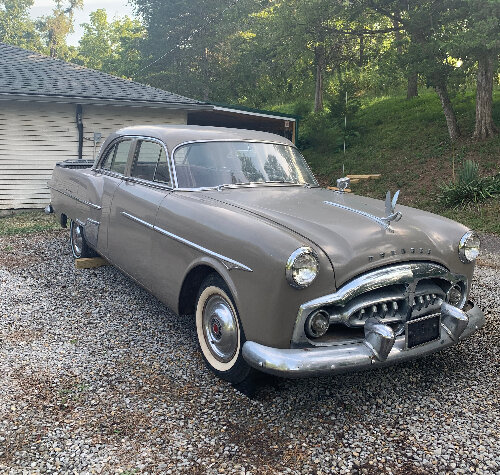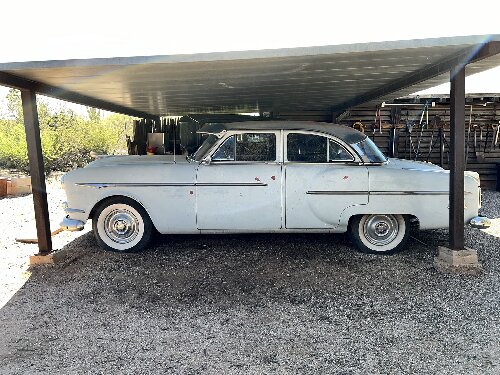|
Re: 1947 356 cu inch manifolds
|
||||
|---|---|---|---|---|
|
Forum Ambassador

|
The exhaust manifold was naked cast iron. Eastwood's stainless steel manifold paint when applied to a clean manifold and allowed to cure via engine heat gives a very good approximation of the original appearance and has good longevity. Look for confirmation from others but I believe the intake manifold was painted black.
Posted on: 2015/11/24 10:18
|
|||
|
||||
|
Re: 1947 356 cu inch manifolds
|
||||
|---|---|---|---|---|
|
Home away from home
|
The above's good advice and how my '47 Super's 356 is; black intake, Eastwood silver-gray exhaust.
Adjoining subject, wonder if the reason Packard didn't porcelainize their 1940s manifolds was for better heat dissipation? The 1936-48 Cadillac flathead 346-ci V-8 had porcelainized exhaust manifolds, as well as an antiquated, 1930-style water pump, for that matter. Or was Packard just cutting cost? They were up against the ropes vs. the slickly marketed Buicks, Cadillacs, GM already having lower unit costs, despite the former B-O-P production men brought in for the 120 now running the show. Not concerned whether we like or don't like porcelain, how it holds up then or now, just wonder whether an engineering or cost decision---or both, for Packard to have omitted it. Again, OD gives good advice. I doubt a wash of the Eastwood product much impedes heat dissipation, and certainly looks better than a raw log of cast iron. Further afield from the poster's question, always thought it interesting that Cadillac and Packard shared such close shades of deep green engine color, wonder why one didn't sue the other. Thanks for any corroborated insight, not hunches, guesses. Still wonder, as i did here years ago, if there are any SAE or other impartial papers contrasting, comparing the 356 w/ the 346, or Buick's ohv 320. We seem to be shy on vetted historic insight on these forums, long on Monday morning quarterbacking and fantasy cars. Despite only another 10 cubic inches than the concurrent Cadillac, the Packard 356 puts out a bit more torque and considerably more real world hp. Skip the advertised figures for both, which are inflated, as were all ad hp even then, according to exhaustive dynamometer tests of every domestic 1940 engine by Buick engineers other than the lowest-priced cars which weren't seen as competition, Flint's advertised hp being closer to the truth than most others, Cad and Packard included. The 1941-47 Cad 346 had a high for the day 7.25:1 compression against the 1942-47 Packard 356's 6.85:1. So wondering if inline sixes and eights being the only engines in natural, inherent balance allowed Packard to run a slightly hotter cam than than the Cad without sacrificing the smoothness, unobtrusiveness Packard customers expected? Again, would really be swell if someone could dredge any period 1940s SAE or other objective papers, assuming there were any. Meanwhile, back to porcelain and thanks again for anything factual.
Posted on: 2015/11/24 15:08
|
|||
|
||||
|
Re: 1947 356 cu inch manifolds
|
||||
|---|---|---|---|---|
|
Forum Ambassador

|
(1) With regard to the color of engine paint, several other makes at one time or another used a green the same or very similar to Packard. Oldsmobile comes to mind immediately and although Pierce-Arrow generally used black I believe they used a similar green at one point in their history. As to a law suit over the use of that color, that seems without basis, any more than you could sue because someone offered a car in black, or blue.
(2) Re porcelaining of manifolds, I suspect it was as much a matter of cost containment as it was of just changing times. There was a time when owners of luxury cars fully expected their engines to be "well-dressed", for example the large amount of nickel plating on senior Packard engines thru 1939. But I think that era was in it's waning days by 1940. Nothing particularly "dressy" about the new wide-angle Cadillac V16.
Posted on: 2015/11/24 16:36
|
|||
|
||||








